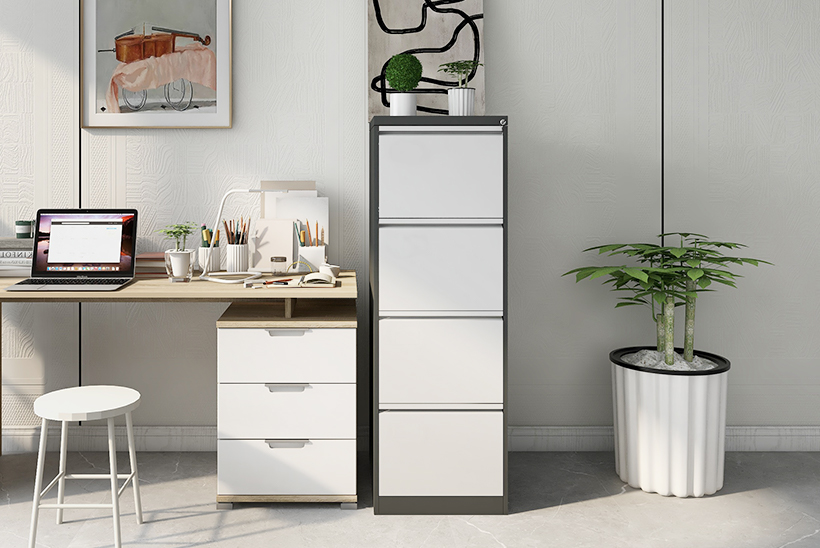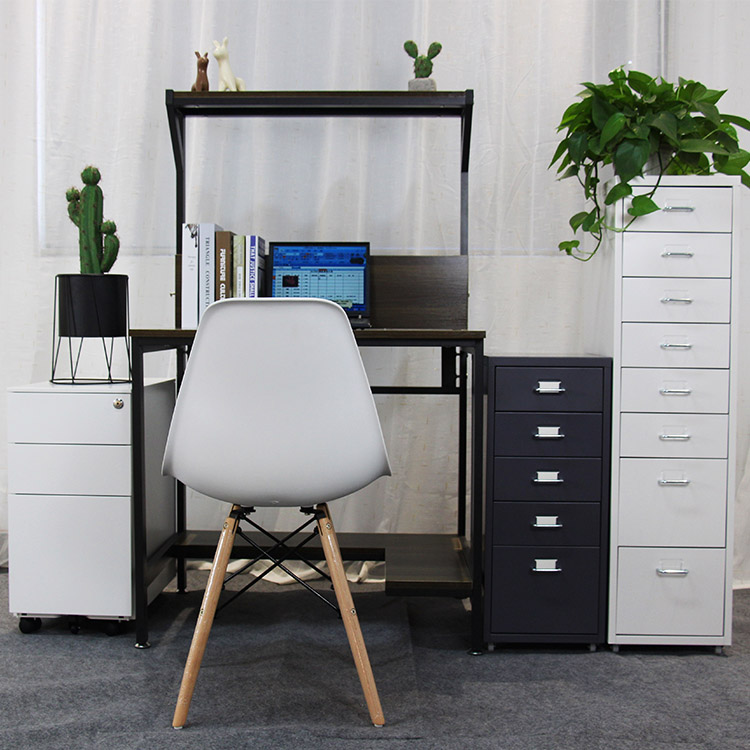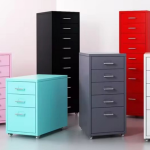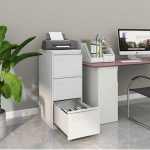A good home office file cabinet not only stores documents effectively but also enhances your work efficiency and helps maintain a neat, organized office. Here's how to choose a practical and aesthetically pleasing file cabinet for your home office.
Determine Your Needs: Types of File Cabinets
When selecting a home office file cabinet, it’s important to define your needs clearly. Different types of file cabinets serve various purposes. Common types include:
Vertical File Cabinet: Best for storing large quantities of documents, saving horizontal space, and ideal for users with many files.
Lateral File Cabinet: Perfect for wide files, especially in tight spaces, offering easier access.
Mobile File Cabinet: Equipped with wheels for easy movement, great for spaces that require frequent layout adjustments.
Multi-Drawer File Cabinet: Ideal for those who need to store various items like documents, stationery, and books.


Know Your Space and Size: How to Choose the Right File Cabinet
Before buying a file cabinet, measure your space. Cabinets come in various sizes, so make sure the one you choose fits comfortably without overcrowding the area. Pay attention to the height, width, and depth of the cabinet to ensure it uses the space effectively while allowing easy access to your files.
Material Selection: Advantages and Disadvantages of Metal, Wood, and Plastic
Material plays a key role in selecting a home office file cabinet. Common file cabinet materials include:
Metal File Cabinet: Known for its durability, fire resistance, and theft resistance, making it ideal for storing important documents. It is a preferred choice for many offices.
Wooden File Cabinet: Offers a more aesthetically pleasing look, adding warmth and elegance to your office, suitable for a home office environment.
Plastic File Cabinet: Lightweight and affordable, suitable for storing everyday documents and lighter items, though it’s less durable. Choose the material based on your needs to balance durability and appearance.
Security and Locks
Choose a lock type based on the value of your documents and the level of security required. Common lock types include electronic locks, key locks, combination locks, padlocks, and fingerprint locks.
Storage Design
Look for a home office file cabinet with a well-thought-out storage design to help you organize and manage your documents easily, improving office efficiency. Features to consider include:
Multi-Functional Drawers: Some file cabinets feature multiple drawers, ideal for storing different sizes of documents and office supplies.
File Dividers: Built-in dividers help organize your files, making retrieval more efficient.
Adjustable Shelves: Some cabinets offer adjustable shelves, allowing you to customize storage based on document size.
Style and Appearance: Matching the Overall Office Style
Consider how the file cabinet will complement the overall style of your office. An aesthetically pleasing cabinet will enhance the atmosphere of your workspace, making it a more enjoyable environment.
Budget: How to Choose a Quality File Cabinet Within Your Budget
File cabinet prices vary, so balancing your needs and budget is important. If you’re on a limited budget, opt for a functional cabinet at a moderate price. For a larger budget, consider a higher-end option.
Choosing a home office file cabinet requires evaluating several factors, including storage requirements, space size, material, security, design, and more. Weigh your priorities to find the best option for your needs.





